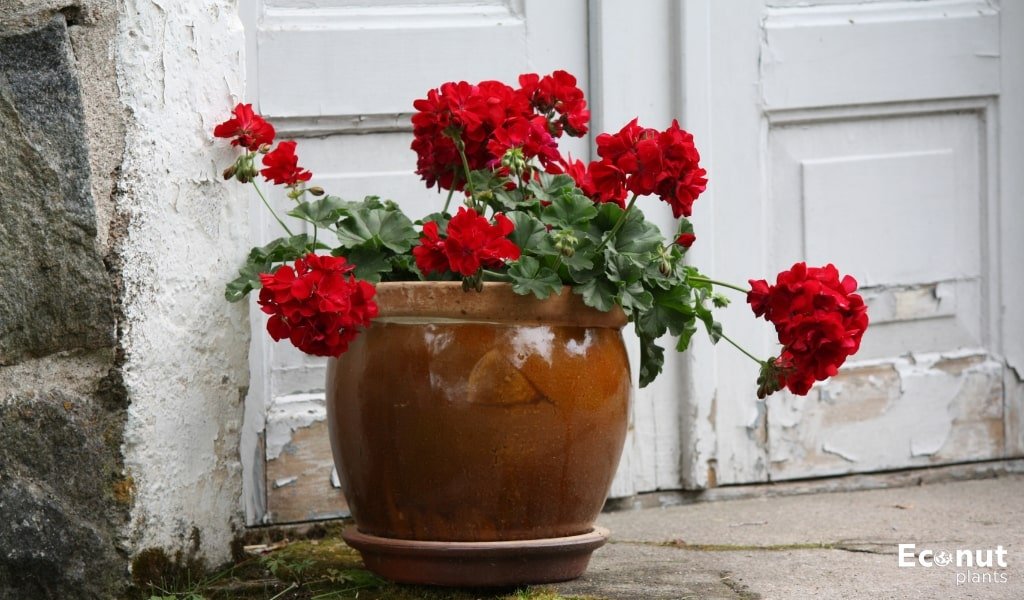Growing peonies in a pots & Container that you thinking? Peonies’ consistent seasonal beauty and prodigious bloom have won over most gardeners.
Not all gardens are suitable for the growth of established plants, even though they can thrive for decades with very little care.
Finding out more about the particular requirements of peonies may be especially interesting if you can’t plant them directly in your yard and instead want to grow them in pots or raised beds. Are potted peonies able to produce? Go on reading.
Know Your Hardiness Zone

There are eight zones in which peonies can be found. Perennial planting in containers often adheres to the planting guidelines of the two zones mentioned above.
If you live in zones 7-8, peonies will consequently fare well over the winter in pots. In zones 3–5, specific steps must be taken to ensure your peony’s survival over the winter. For zones 5 and 6, you will have to provide some security.
You must take certain actions in zones 3–4 to guarantee your peony’s survival during the winter. You will need to offer some security for zones 5 and 6. These zones do not have all-inclusive regulations.
Pick a Proper Container
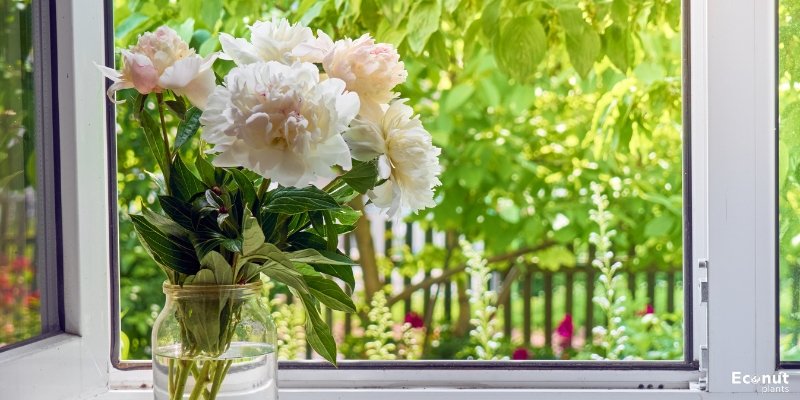
Not every container is suitable for peonies. To support its huge tap root, you’ll need a large container with some depth. If a peony is placed in standing water, it will rot.
The pot’s bottom must be able to easily drain any extra water. It is insufficient to have only rocks or pebbles in a container’s bottom. There must be one or more drainage holes in the bottom of the container.
The pot’s expansion may cause it to shatter when it freezes solid. I have a thing for enormous plastic planters, ones made of fiberglass, and planters half the size of a whisky barrel.
Use the Correct Soil Type

Light potting soil works best for peonies planted in containers, while they can survive in less-than-ideal soil conditions in the garden.
Peonies prefer well-drained, light-free soil. Water can be drained from the peony’s roots by starting them in potting soil. To allow all the nutrients to permeate into the pot the next year from spring rain and snowmelt, I would cover the peony with a layer of compost in the autumn.
Water Evenly, But Not Too Much
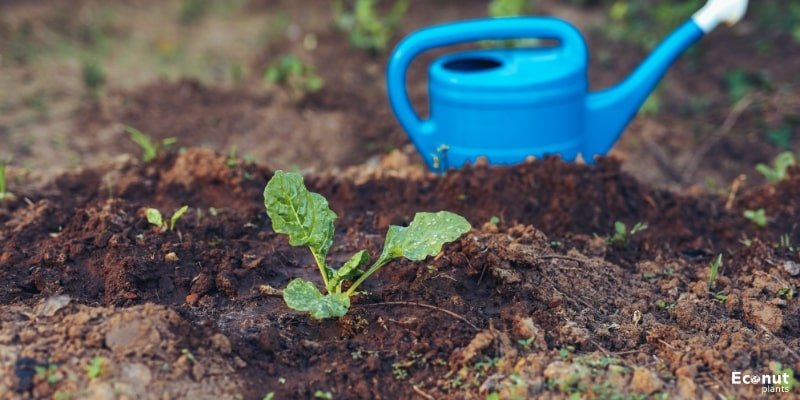
While they require regular watering, peonies cannot withstand standing water. If you choose a container with adequate drainage holes and use a light-potting soil mixture, watering will be simple.
Make sure the peony in your container doesn’t dry out. Due to their big and deep tap roots, garden peonies are far more drought-tolerant. This permits the peony to look for water underground. What a container peony can locate is its only resource. If you don’t water it for an extended period, the leaves will become crispy and brown.
Many factors, such as location, rainfall, weather, and container size, will affect the exact amount of water. If you give your peony too much water, it could rot the leaves on the stems and turn yellow. Make sure the water in your peony can be released. Check to make sure the soil is evenly damp but not soggy.
Pick the Right Location
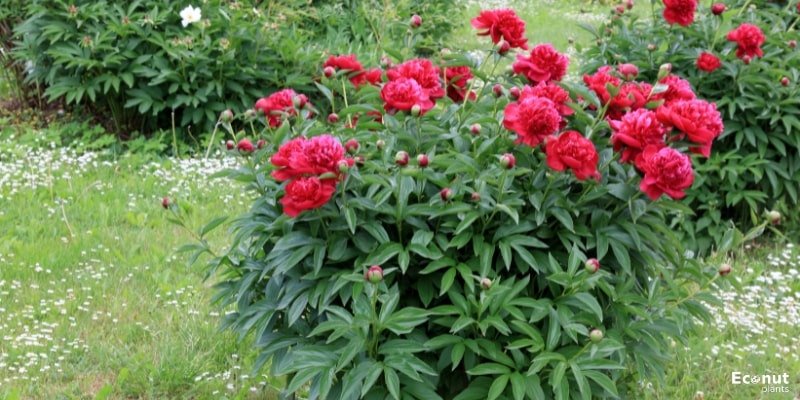
Peonies require full sun to attain their best blooming time. They won’t bloom in shadow and will bloom less in partial sun. Choose a location that receives six hours of sunlight. If there is some noon shade to protect the blossoms from the strongest sun rays, they will remain longer.
Choose a location that is protected from the wind and rain if at all possible. Peony blossoms are delicate, so a strong windstorm or heavy rain could damage the season’s blooms.
When it comes to shade during the noon sun, wind, and rain, container peonies are among the greatest options for outdoor seating. Arrange your containers on decks, patios, and lounging places so that you can enjoy the flowers and they can have sheltered spots.
Choose the Right Variety
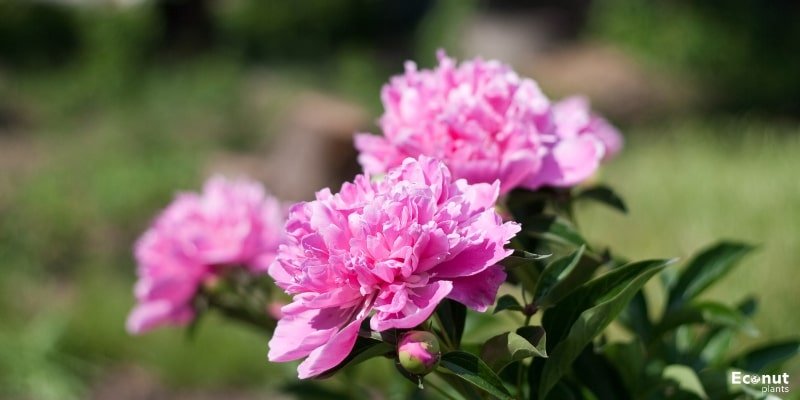
Most of this comes down to personal taste. “Sarah Bernhardt” peonies are exquisite if you’re looking for large, pink double peony flowers. For striking and somber blossoms, consider ‘Karl Rosenfield’.
The blooms’ hue may also limit the variety you can choose. Popular peony types come in various colours, including white, yellow, red, pink, and purple. Colour can limit your alternatives, even though it shouldn’t be your primary factor.
The bloom time is another thing to consider. Peony blooms in our gardens don’t last very long. Alternatively, if you’d prefer a late-summer bloom, an Itoh peony like “Bartzella” might be a nice option.
Plant Them Correctly

Planting a peony is an art form. If they are not positioned precisely at the plant’s crown, they will not open flowers. After they are established, they also don’t mind being transferred. Both peony plants and roots are available for purchase.
For the Plant: Excavate a sizable hole in the middle. After taking the peony out of the nursery pot, work the dirt and roots loose. Put it in the opening. Just plant it up to the plant’s crown. Never plant farther up the stem. Ascertain that the peony’s crown line is only marginally below the container.
Ensure that the crown does not rise above the container’s line. If the plant is mounded above the pot, water will just run off it. However, the plant is susceptible to crown and root rot if it sinks too far below the pot. Make sure to water the newly planted peony thoroughly.
For bare roots: Excavate a hole. Insert the exposed root into the ground. Cover the “eyes” of the peony root with just one inch of earth. Neither mounded over the container nor sank. It is advisable to buy and plant these bare roots in the autumn. Give the root plenty of water.
Stick to a Regular Maintenance Plan
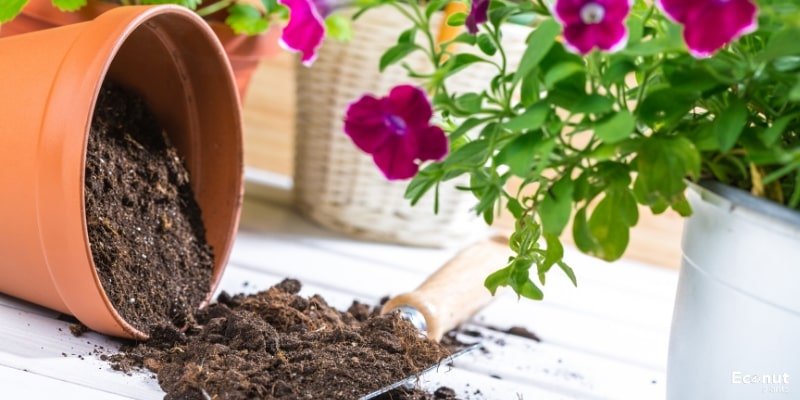
The low maintenance requirements of container peonies are one of their greatest features. They could require staking or cages, depending on the kind. The two hoop cages are the most effective for container peony. They support the plant such that the cage is hidden from view by the foliage.
It’s preferable not to see a lot of stakes and string because your container peony will most likely be near a sitting area. As soon as spring arrives, place the cage on the peony so it can grow through, around, and over the cage.
When the peony has completed blooming, trim off the wasted blossoms. By doing this, the plant ensures that the energy needed to make seeds will be returned to the plant, allowing it to develop and enhance the following year.
Pests & Diseases Quickly

Peonies are comparatively pest and disease-free. The best defence against pests for your peony is to maintain ideal growing conditions. This means putting them in nutrient-rich soil, full sun, regular watering, and the right depth. Reaching these objectives will make your peony far less susceptible to illness and pests.
It won’t help much, though, if you already have bugs. Two insect-related pests that can be controlled are aphids and spider mites. To eradicate them, wash the peony leaves or give them a good hose-down (do not spray the delicate petals). An alternative is to apply insecticidal soap, being sure to spray the undersides of the leaves.
So as not to reinfect your peony the following year, remove as much or as much of the soil as possible at the end of the season (based on the size of your pot). Start over with fresh potting soil. Think about the causes of the mildew next.
It is best not to water the leaves, especially at night. Overnight, wet leaves serve as a mildew breeding habitat. Additionally, make sure your peony receives adequate sunlight.
Correct Type of Fertilizer

I don’t usually fertilize my perennial plants. Rather, I use compost as a top dressing for my soil every autumn. A few suitable possibilities are old manure, worm castings, compost, and marine dirt.
Similar to how I would in my garden, incorporate this into the container peony. Applying an exquisite top dressing in the spring, enabling it to reach the roots. Don’t worry if you neglected to apply the top dressing in the autumn; just do it in the spring.
You may maintain the health of your peony in mixed containers with other annuals by using an all-purpose fertilizer (20-20-20). Annual flowers need a lot of resources because they grow big and fast.
Plan for Life after Seasonal Blooms

Peonies have a single blooming season in the garden. This usually happens in the early summer or late spring. There are a few things you can do once they have finished flowering and you have cut off the seed pods.
Another choice would be to switch up your peony’s containers of flowers with others. After your peony blooms, you cannot immediately cut it down. For the plant to grow larger and stronger in the upcoming season, it still requires energy from the sun. However, you can remove the entire pot from the configuration of your containers.
After moving the container peony into a spot with direct sunlight, keep it well-watered. Even better is to put your sprinkler system into a garden bed so it can receive water if you have one. After that, place a different container there. Perhaps you have a coneflower in a pot that is about to blossom.
Plan for fall
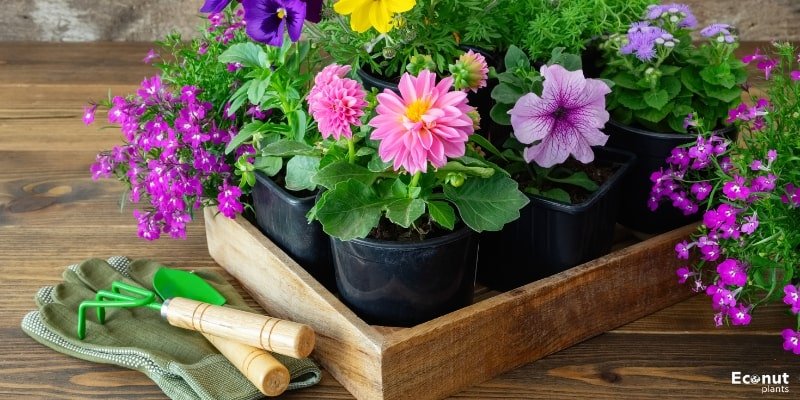
Savour your peony container far into autumn. They become a beautiful, flaming crimson hue. Think about surrounding them with some mums from a lovely fall display or some ornamental gourds.
Cut down your peony when it’s time to close up shop in your garden. Make sure to water your plants until they freeze. On top of the container, I would spread a layer of mulch or leaves.
Plan for Overwintering
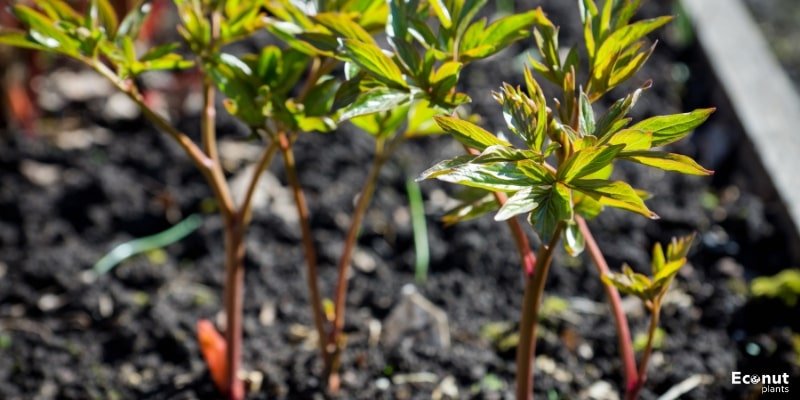
When peonies are cultivated in containers, they become fragile. To offer your peony some protection, you can put it in an unheated garage.
If you reside in zone 6 or above and the pot is quite large, it could just need a good covering of leaves or mulch. You will need to overwinter your peony in the ground if you live in zones 3 or 4, or anywhere else where there is a lot of freeze and thaw over the winter.
Sink the entire pot into the ground by excavating a sizable hole in a vacant area of the garden. A tree enters like one. In the summer, you can put this liner into a more ornamental pot, then remove the insert and bury it in the ground.
Plan for spring

In the spring, start giving your container peony some water. You’ll see red branches emerging. If necessary, set up a cage at this point so the peony can grow all around it. Once the ground has thawed, remove any pots that you may have buried for the winter.
Experiment with Design
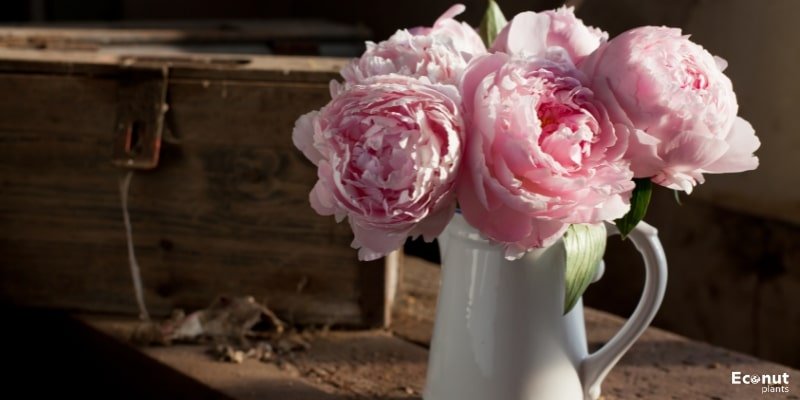
The exciting part is about to begin. Here are some ideas for incorporating peonies into designs for containers. Make a huge container into a perennial garden. Put a peony in front and a delphinium in the back. Add a creeping ground cover, such as woolly thyme or fragrant woodruff, to finish it off.
Mix annuals with a peony. Place petunias and geraniums beneath a peony. After it blooms, the leafy peony will add structure and foliage, and the annuals will continue to bloom throughout the season.
A few smaller pots of blooming annuals, such as dahlias or geraniums, might be added to the arrangement. Odd numbers of containers function best in groups. Arrange 3, 5, or 7 pots of different flowers and plants to create an eye-catching arrangement.
Conclusion
Garden peonies are a traditional flower. There are even more options when they can be placed in containers. Container peonies are an excellent option if you have limited garden space or wish to appreciate their beauty up close. Beautiful peonies should flourish in containers for years if you follow these recommendations.

